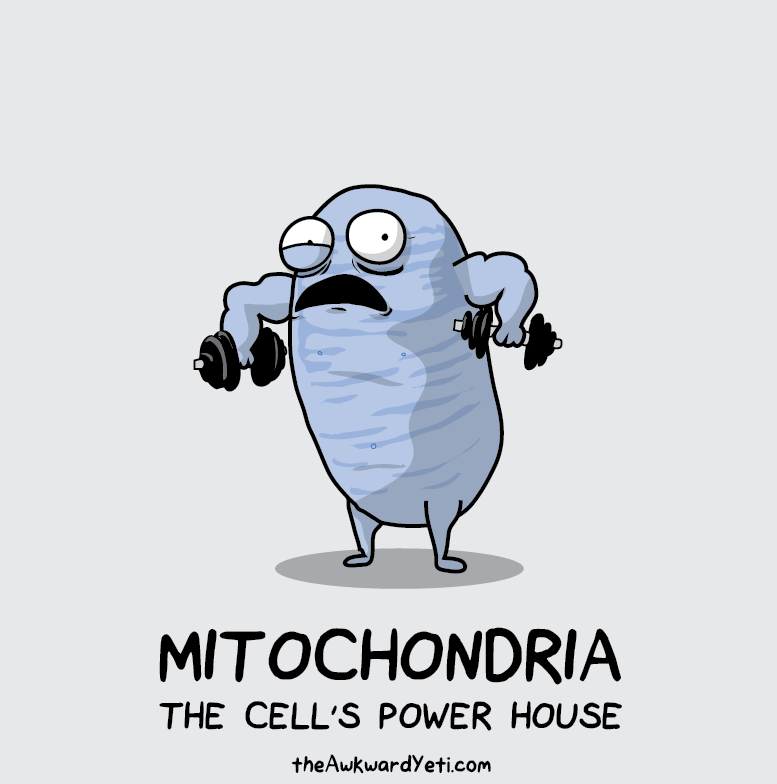
Two Mitochondrion Papers, Both Alike in Dignity
by hugo jhun
One of the basic things you learn in high school biology is that the mitochondrion is the powerhouse of the cell. The paradigm made me think of it as a power plant, with all its sweaty workers and powerlines and smokestacks sending energy to the rest of the cell.
Fast forward to college, and you learn about the mitochondrion as a highly structured organelle, with all of these folds to increase surface area – an efficient use of a small amount of space! And all these surfaces help build electrochemical gradients, full of potential energy, pumping out electrons and ATP and protons flying everywhere.
And then graduate training. Yeah, every turn of the citric acid cycle gets you a bunch of ATP’s and NADH’s, and that’s a lot of energy from sugar. But you’ve also got fatty acid metabolism going on, some steroid synthesis, heat generation, holding onto calcium, and the de rigueur topic of programmed cell death – apoptosis.
The mito has all this redox chemistry going on – maybe it’s just burning all the things around it. Letting out reactive oxygen and nitrogen species, like the dump and sewage system from a power plant. It’s a mixed bag – you want the power to run your car, your oven, your TV the Wifi, but the price? The tire fire that is singlet oxygen.
That’s a lot of things the mito does. And that’s just what we know so far.
But we, or at least I, always thought of these reactions as just reactions in a tube. Work by the Sorrano lab and others (Figure 2) demonstrated that the SHAPE of the mito can change to adjust its function. In retrospect, that should be obvious – cutting a steak with a knife would be pretty easy if your hands were closer together than further apart. Or if you used your feet. But that’s breaking the analogy.

People are still working on what kinds of shapes you would need, or who is changing the shape and under what circumstances. Some in silico work (Figure 3) shows that ATP synthase, the protein that makes all those 30 something ATP’s per molecule of glucose (legit think we need to agree on a number for this), is one of the players informing the shape.

Papers like these remind me that even biologists (don’t even get me started on biochemists) think of mice and cells and organelles as test tubes, and not as crowded places with dynamic shapes around them or on them or even guiding them. It’s a lot to ask – I think we try to reduce things to make them more digestible and easier to maneuver with our obnoxious whiteboarding, but, man, I wish we thought about things like physical forces more often in biology.
REFERENCES
Cogliati, S., Frezza, C., Soriano, M. E., Varanita, T., Quintana-Cabrera, R., Corrado, M., Cipolat, S., Costa, V., Casarin, A., Gomes, L. C., Perales-Clemente, E., Salviati, L., Fernandez-Silva, P., Enriquez, J. A., & Scorrano, L. (2013). Mitochondrial cristae shape determines respiratory chain supercomplexes assembly and respiratory efficiency. Cell, 155(1), 160–171. https://doi.org/10.1016/j.cell.2013.08.032
Anselmi, C., Davies, K. M., & Faraldo-Gómez, J. D. (2018). Mitochondrial ATP synthase dimers spontaneously associate due to a long-range membrane-induced force. The Journal of general physiology, 150(5), 763–770. https://doi.org/10.1085/jgp.201812033